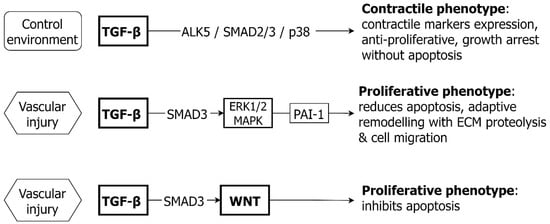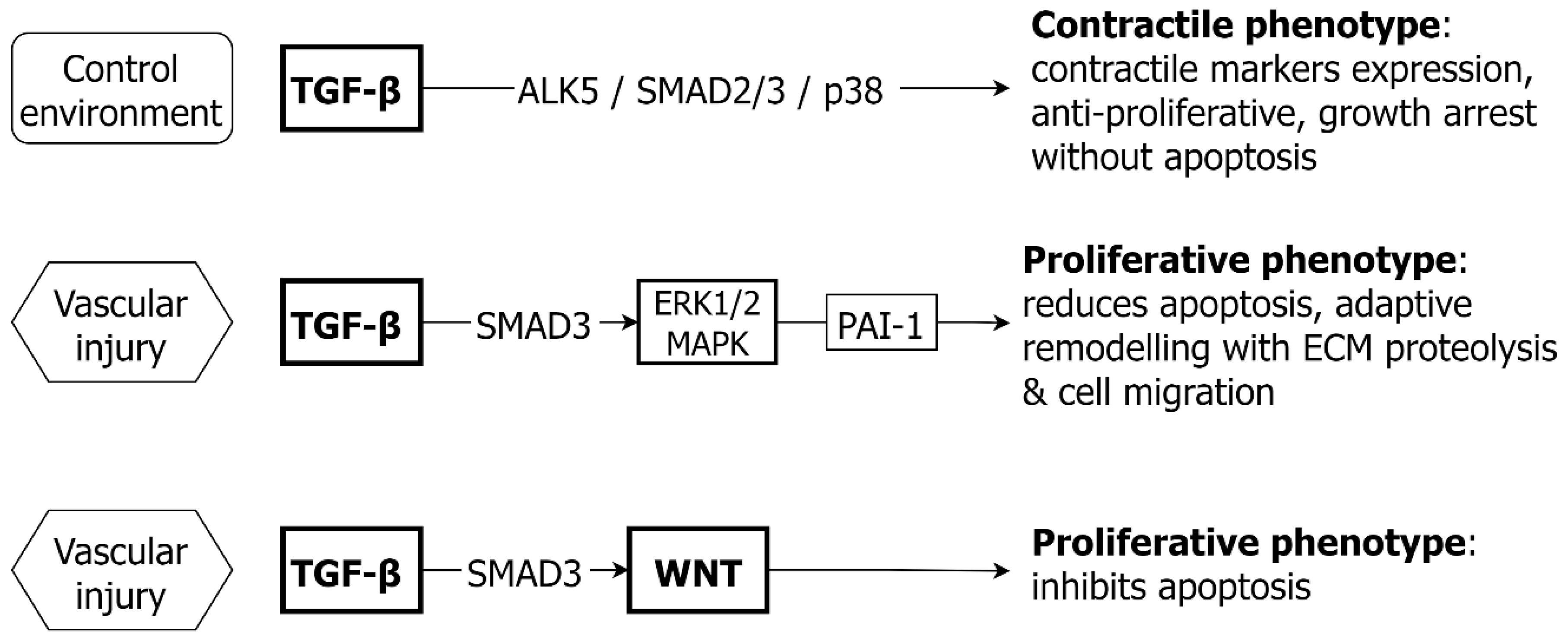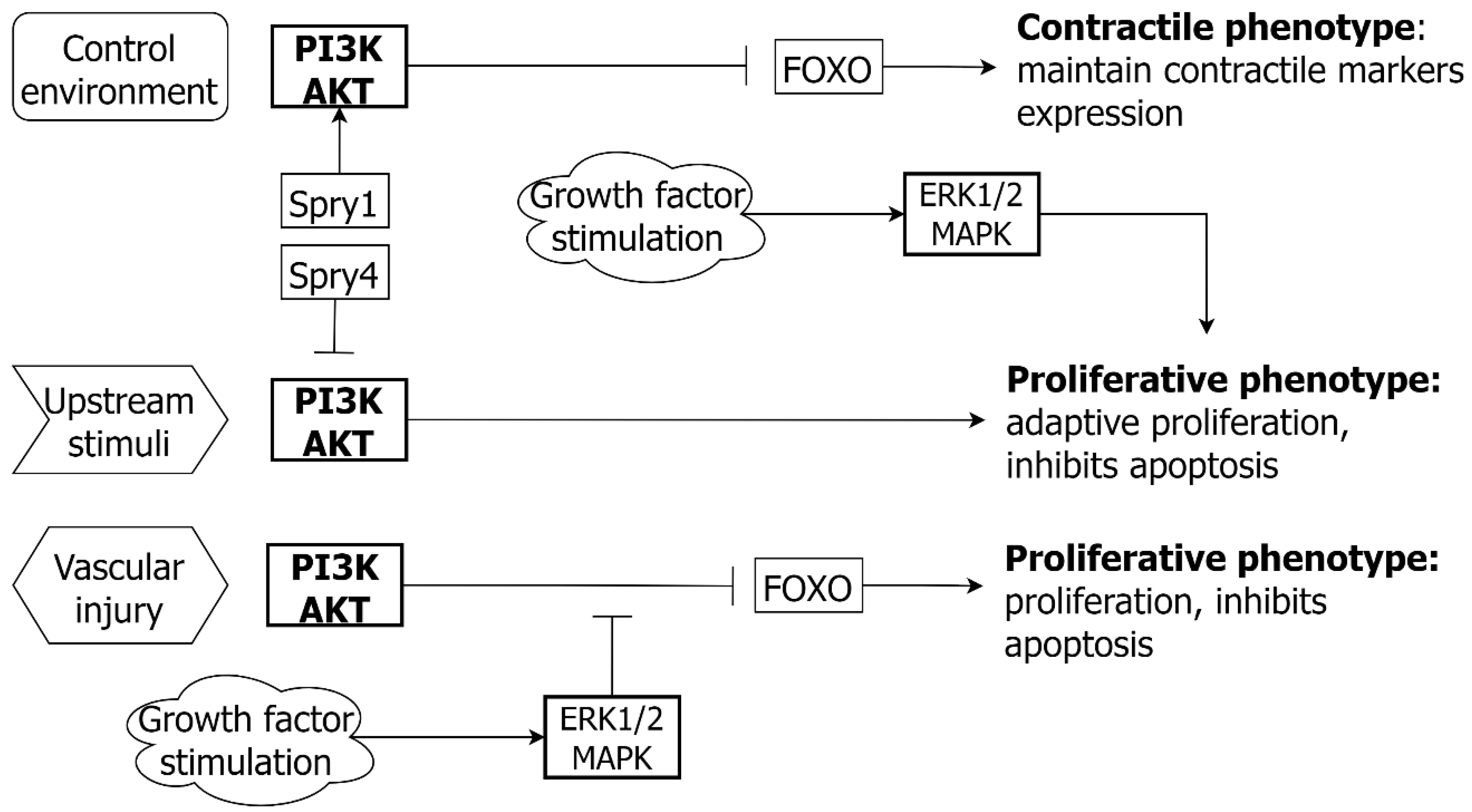Molecular Mechanisms in Genetic Aortopathy–Signaling Pathways and Potential Interventions
Por um escritor misterioso
Last updated 04 setembro 2024

Thoracic aortic disease affects people of all ages and the majority of those aged <60 years have an underlying genetic cause. There is presently no effective medical therapy for thoracic aneurysm and surgery remains the principal intervention. Unlike abdominal aortic aneurysm, for which the inflammatory/atherosclerotic pathogenesis is well established, the mechanism of thoracic aneurysm is less understood. This paper examines the key cell signaling systems responsible for the growth and development of the aorta, homeostasis of endothelial and vascular smooth muscle cells and interactions between pathways. The evidence supporting a role for individual signaling pathways in pathogenesis of thoracic aortic aneurysm is examined and potential novel therapeutic approaches are reviewed. Several key signaling pathways, notably TGF-β, WNT, NOTCH, PI3K/AKT and ANGII contribute to growth, proliferation, cell phenotype and survival for both vascular smooth muscle and endothelial cells. There is crosstalk between pathways, and between vascular smooth muscle and endothelial cells, with both synergistic and antagonistic interactions. A common feature of the activation of each is response to injury or abnormal cell stress. Considerable experimental evidence supports a contribution of each of these pathways to aneurysm formation. Although human information is less, there is sufficient data to implicate each pathway in the pathogenesis of human thoracic aneurysm. As some pathways i.e., WNT and NOTCH, play key roles in tissue growth and organogenesis in early life, it is possible that dysregulation of these pathways results in an abnormal aortic architecture even in infancy, thereby setting the stage for aneurysm development in later life. Given the fine tuning of these signaling systems, functional polymorphisms in key signaling elements may set up a future risk of thoracic aneurysm. Multiple novel therapeutic agents have been developed, targeting cell signaling pathways, predominantly in cancer medicine. Future investigations addressing cell specific targeting, reduced toxicity and also less intense treatment effects may hold promise for effective new medical treatments of thoracic aortic aneurysm.

Role of Oxidative Stress and Autophagy in Thoracic Aortic Aneurysms

IJMS, Free Full-Text

PDF] Vascular Smooth Muscle Cells in Aortic Aneurysm: From Genetics to Mechanisms

IJMS, Free Full-Text

Marfan syndrome revisited: From genetics to clinical practice

Summary of evidence for signaling pathways in pathogenesis of thoracic

PDF] Vascular Smooth Muscle Cells in Aortic Aneurysm: From Genetics to Mechanisms

Macrophage in Sporadic Thoracic Aortic Aneurysm and Dissection: Potential Therapeutic and Preventing Target

Peptides from Harpadon nehereus Bone Ameliorate Angiotensin II-Induced HUVEC Injury and Dysfunction through Activation of the AKT/eNOS and Nrf2 Pathway

Thoracic aortic aneurysm gene dictionary - Stefanie Rohde, Mohammad A Zafar, Bulat A Ziganshin, John A Elefteriades, 2021

Pathway analysis identifies novel non-synonymous variants contributing to extreme vascular outcomes in Williams-Beuren syndrome
Recomendado para você
-
 Jornal Dois Irmãos04 setembro 2024
Jornal Dois Irmãos04 setembro 2024 -
 Arthur Petry (@ArthurPetryy) / X04 setembro 2024
Arthur Petry (@ArthurPetryy) / X04 setembro 2024 -
O humorista e podcaster Arthur - Jovem Pan Entretenimento04 setembro 2024
-
 Entrar em um relacionamento é Arthur Petry - Pensador04 setembro 2024
Entrar em um relacionamento é Arthur Petry - Pensador04 setembro 2024 -
 ARTHUR PETRY fala sobre um mundo Gay04 setembro 2024
ARTHUR PETRY fala sobre um mundo Gay04 setembro 2024 -
 2023 Archives - Teatro Renassaince04 setembro 2024
2023 Archives - Teatro Renassaince04 setembro 2024 -
 A Gazeta Familiares autorizam holograma e voz artificial de Dinho dos Mamonas Assassinas04 setembro 2024
A Gazeta Familiares autorizam holograma e voz artificial de Dinho dos Mamonas Assassinas04 setembro 2024 -
 EDU CAMARGO - NOIR CONVIDA - #19 #NC by Noir Podcast04 setembro 2024
EDU CAMARGO - NOIR CONVIDA - #19 #NC by Noir Podcast04 setembro 2024 -
 BEATRIZ CONTA COMO PETRY QUASE M0RREU NO RESTAURANTE04 setembro 2024
BEATRIZ CONTA COMO PETRY QUASE M0RREU NO RESTAURANTE04 setembro 2024 -
O que realmente aconteceu, mas ninguém consegue acreditar? - Quora04 setembro 2024
você pode gostar
-
 Mortal Kombat 12 Trailer Coming Soon : r/SelfPromotion04 setembro 2024
Mortal Kombat 12 Trailer Coming Soon : r/SelfPromotion04 setembro 2024 -
 game pass ultimate 1 ano ou 6 meses , economize ate 200 reais04 setembro 2024
game pass ultimate 1 ano ou 6 meses , economize ate 200 reais04 setembro 2024 -
 Mini paredão - Áudio, TV, vídeo e fotografia - Nazaré, Salvador04 setembro 2024
Mini paredão - Áudio, TV, vídeo e fotografia - Nazaré, Salvador04 setembro 2024 -
/i.s3.glbimg.com/v1/AUTH_08fbf48bc0524877943fe86e43087e7a/internal_photos/bs/2021/n/1/tloLwLSu2kwolk7rOJYg/2012-06-22-new-super-mario-bros-2.jpg) Nintendo detalha futuro DLC para New Super Mario Bros. 204 setembro 2024
Nintendo detalha futuro DLC para New Super Mario Bros. 204 setembro 2024 -
 LEGO® Jurassic World no Steam04 setembro 2024
LEGO® Jurassic World no Steam04 setembro 2024 -
 The Kill (The Forbidden Game, #3) by L.J. Smith04 setembro 2024
The Kill (The Forbidden Game, #3) by L.J. Smith04 setembro 2024 -
 Pancake lady on X: ADF-11F Glowing Cameras for Ace Combat 7 is released Downloads: Nexus Mods: Mod DB: #AceCombat #AceCombat7 #ACE7 #エースコンバット7 #エースコンバット #エースコンバット7MOD写真部 https04 setembro 2024
Pancake lady on X: ADF-11F Glowing Cameras for Ace Combat 7 is released Downloads: Nexus Mods: Mod DB: #AceCombat #AceCombat7 #ACE7 #エースコンバット7 #エースコンバット #エースコンバット7MOD写真部 https04 setembro 2024 -
 Backrooms game West Wales Chronicle : News for Llanelli04 setembro 2024
Backrooms game West Wales Chronicle : News for Llanelli04 setembro 2024 -
Download the game FC24 for free] Enter the account and click on the link in the E account and enjoy playing for free🎮⚽️📱 fifa22 #fifa…04 setembro 2024
-
 Justice For Johnny Depp - Dia 13 Página « Johnny Depp Forever Johnny Depp Forever04 setembro 2024
Justice For Johnny Depp - Dia 13 Página « Johnny Depp Forever Johnny Depp Forever04 setembro 2024

![Download the game FC24 for free] Enter the account and click on the link in the E account and enjoy playing for free🎮⚽️📱 fifa22 #fifa…](https://lookaside.instagram.com/seo/google_widget/crawler/?media_id=3231413739986610994)